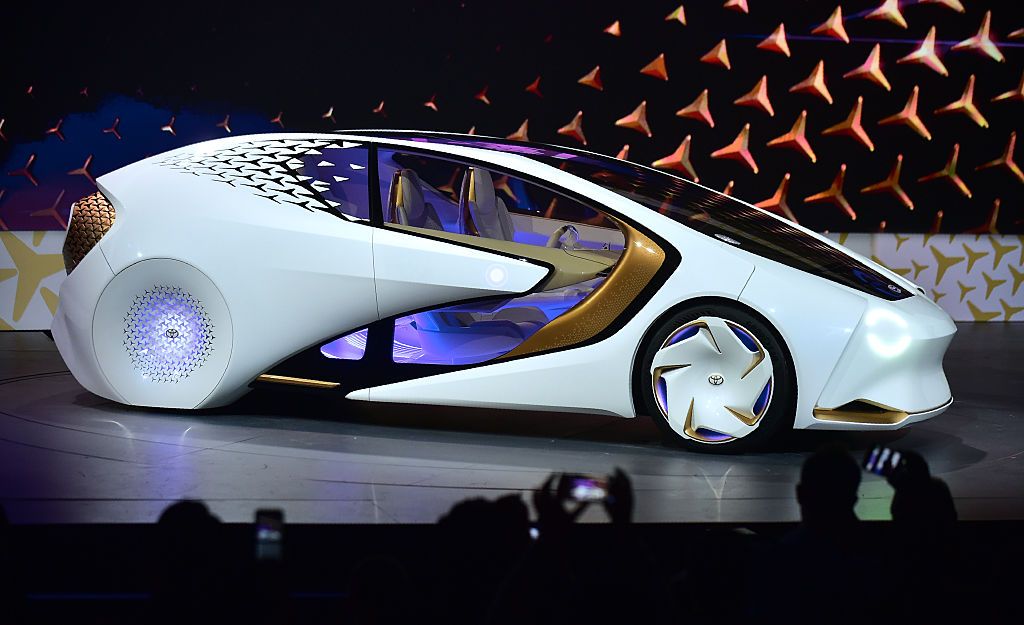A look at automobile history reveals a few Holy Grails that strike me more as wishful thinking than practicality. These include rear-mounted engines, gull-wing doors and transparent roofs.
As for the latter, the wish is to have an open-air, convertible-like driving experience coupled with weather protection. A major downside is the creation of a greenhouse effect, whereby the passenger compartment becomes overheated in sunny conditions. Use of air conditioning can counteract that, but at the price of reduced fuel economy.
Back in the mid-1950s when air conditioning was a rare, expensive accessory, Ford Motor Company launched models featuring a transparent roof over the front seat. That roof was a thick acrylic glass, as this source mentions. These panels were given dark blue-green tints in an effort to block sunshine effects.
Nearly 23,000 1954 model year Fords and Mercurys thus equipped were sold, and the feature was continued for the next two model years amid declining sales.
This is the 1954 Ford Crestline Skyliner with its transparent roof panel.
1955 Fords look considerably changed from 1954, but this was the result of a major facelift rather than an actual redesign. Shown here is what was named the Crown Victoria Skyliner, the Skyliner label again denoting a transparent roof panel. The '54 version was based on a hardtop convertible body, but for '55 we find a heavy, chromed B-pillar style. Barrett-Jackson auction photo.
Skyliners for 1956 were the same as in 1955 aside from superficial model year facelift changes. Mecum Auctions photo.
Mercury's version of the Skyliner was called the Monterey Sun Valley for 1954.
For 1955 the name was Montclair Sun Valley. Like Ford, '55 Mercurys were heavily facelifted 1954 bodies. Unlike Ford Skyliners, Sun Valleys continued to be based on hardtop bodies. Auctions America photo.
Sun Valley and other Mercury models were given fairly minor facelifts for 1956. Auctions America photo.
A look at automobile history reveals a few Holy Grails that strike me more as wishful thinking than practicality. These include rear-mounted engines, gull-wing doors and transparent roofs.
As for the latter, the wish is to have an open-air, convertible-like driving experience coupled with weather protection. A major downside is the creation of a greenhouse effect, whereby the passenger compartment becomes overheated in sunny conditions. Use of air conditioning can counteract that, but at the price of reduced fuel economy.
Back in the mid-1950s when air conditioning was a rare, expensive accessory, Ford Motor Company launched models featuring a transparent roof over the front seat. That roof was a thick acrylic glass, as this source mentions. These panels were given dark blue-green tints in an effort to block sunshine effects.
Nearly 23,000 1954 model year Fords and Mercurys thus equipped were sold, and the feature was continued for the next two model years amid declining sales.
This is the 1954 Ford Crestline Skyliner with its transparent roof panel.
1955 Fords look considerably changed from 1954, but this was the result of a major facelift rather than an actual redesign. Shown here is what was named the Crown Victoria Skyliner, the Skyliner label again denoting a transparent roof panel. The '54 version was based on a hardtop convertible body, but for '55 we find a heavy, chromed B-pillar style. Barrett-Jackson auction photo.
Skyliners for 1956 were the same as in 1955 aside from superficial model year facelift changes. Mecum Auctions photo.
Mercury's version of the Skyliner was called the Monterey Sun Valley for 1954.
For 1955 the name was Montclair Sun Valley. Like Ford, '55 Mercurys were heavily facelifted 1954 bodies. Unlike Ford Skyliners, Sun Valleys continued to be based on hardtop bodies. Auctions America photo.
Sun Valley and other Mercury models were given fairly minor facelifts for 1956. Auctions America photo.


















EmoticonEmoticon